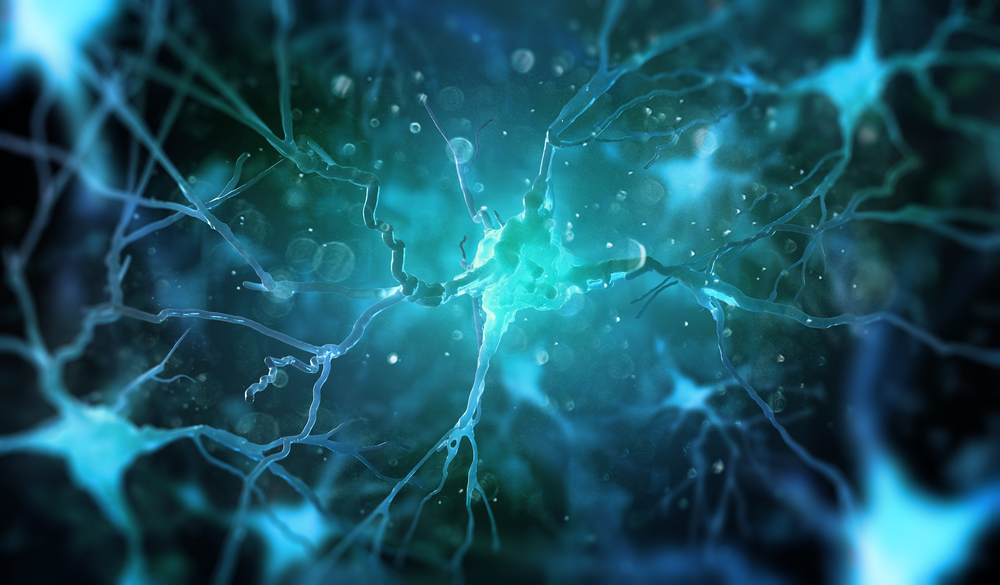Fragile X Protein May Be Crucial for Cells That Support Neurons, Study Finds
Written by |

Loss of the fragile X mental retardation protein (FMRP), the protein missing in people with fragile X syndrome, was found in mouse and human astroglia — nerve cells that support and protect neurons — to activate a signaling pathway that ends up disrupting cell communication in the brain.
This discovery might open new avenues for fragile X treatment, the study’s scientists said.
“Unveiling astroglia-specific molecular mechanisms involved in [fragile X] development could give us new targets for potential therapeutics,” Yongjie Yang, PhD, a professor of neuroscience at Tufts University School of Medicine, and the study’s senior author, said in a university news story.
Yang’s team also reported, for the first time, how the lack of FMRP in astroglia impacts protein production in these cells.
The study, “Astroglial FMRP deficiency cell-autonomously up-regulates miR-128 and disrupts developmental astroglial mGluR5 signaling,” published in the journal PNAS.
Fragile X is caused by mutations in the FMR1 gene that affect the production of FMRP, a protein found in all brain cells and needed for cognitive development.
“The mutation doesn’t actually change the genetic code. Instead it causes part of the gene … to repeat,” Yang said. “We all carry those repeats in different numbers. If you carry roughly 50 or fewer, your brain development will be normal, but if the repeats go beyond 200, you will have the full mutation and your brain will produce only 10 to 20 percent of the needed level of FMRP.”
Several studies have shown that in neurons, FMRP controls protein production by interacting with messenger RNA (mRNA) molecules — used by cells use as a template to create proteins in a process known as translation.
These studies also demonstrated that the loss of FMRP in neurons leads to the overactivation of key signaling cascades involved in protein production, which affect synaptic plasticity — the process by which nerve cell connections (synapses) become stronger or weaker over time in response to new information.
How FMRP’s lack alters protein production and astroglial function, however, remains unclear.
To explore the role FMRP might have in astroglia, the team led by Yang performed a series of experiments in a mouse model where the Fmr1 gene — the mouse equivalent of the human FMR1 gene — was specifically deleted in these cells.
They also used human astroglia modified in the lab to lack FMRP.
Their experiments showed that in both human and mouse astroglia, the loss of FMRP caused these cells to produce large amounts of a microRNA (miRNA) called miR-128-3p, which is normally enriched in the brain and is thought to be involved in the formation of new neurons, neuron activity, and memory acquisition.
miRNAs are tiny RNA molecules that control the expression, or activity, of several genes.
Excessive production of miR-128-3p in human and mouse astroglia was found to impair the production of metabotropic glutamate receptor 5 (mGluR5) — a protein receptor for glutamate, a chemical that promote brain activity and is needed for astroglia-neuron communication.
“Interestingly, this regulation pathway isn’t found in neurons,” Yang said.
In agreement, they showed mGluR5 signaling could be restored in astroglia that lacked FMRP by blocking miR-128-3p in these cells. And the signaling pathway could be further suppressed by forcing FMRP-deficient astroglia to produce even higher levels of miR-128-3p.
Additional experiments demonstrated that in astroglia, FMRP seems to control protein production at a post-transcriptional level, rather than at a transcriptional level as miRNAs do.
A molecule is said to regulate transcription when it controls the process by which DNA is converted into RNA; post-transcriptional regulation occurs at the RNA level, after transcription has taken place, and before translation has begun.
“Overall, our study defines an FMRP-dependent … miR pathway that alters developmental astroglial mGluR5 signaling, which unveils astroglia-specific molecular mechanisms involved in [fragile X],” the researchers wrote.
According to Yang, these findings in astroglia may lead to new ways of treating the disease.
“We want to better understand [fragile X] and identify new avenues for drugs and other interventions to attenuate the effects of the disease. Most other studies have focused on the neuron side, and drug trials based on these studies have failed so far,” he said. “Our glia/astroglia perspective gives a fresh view to search for new targets.”





